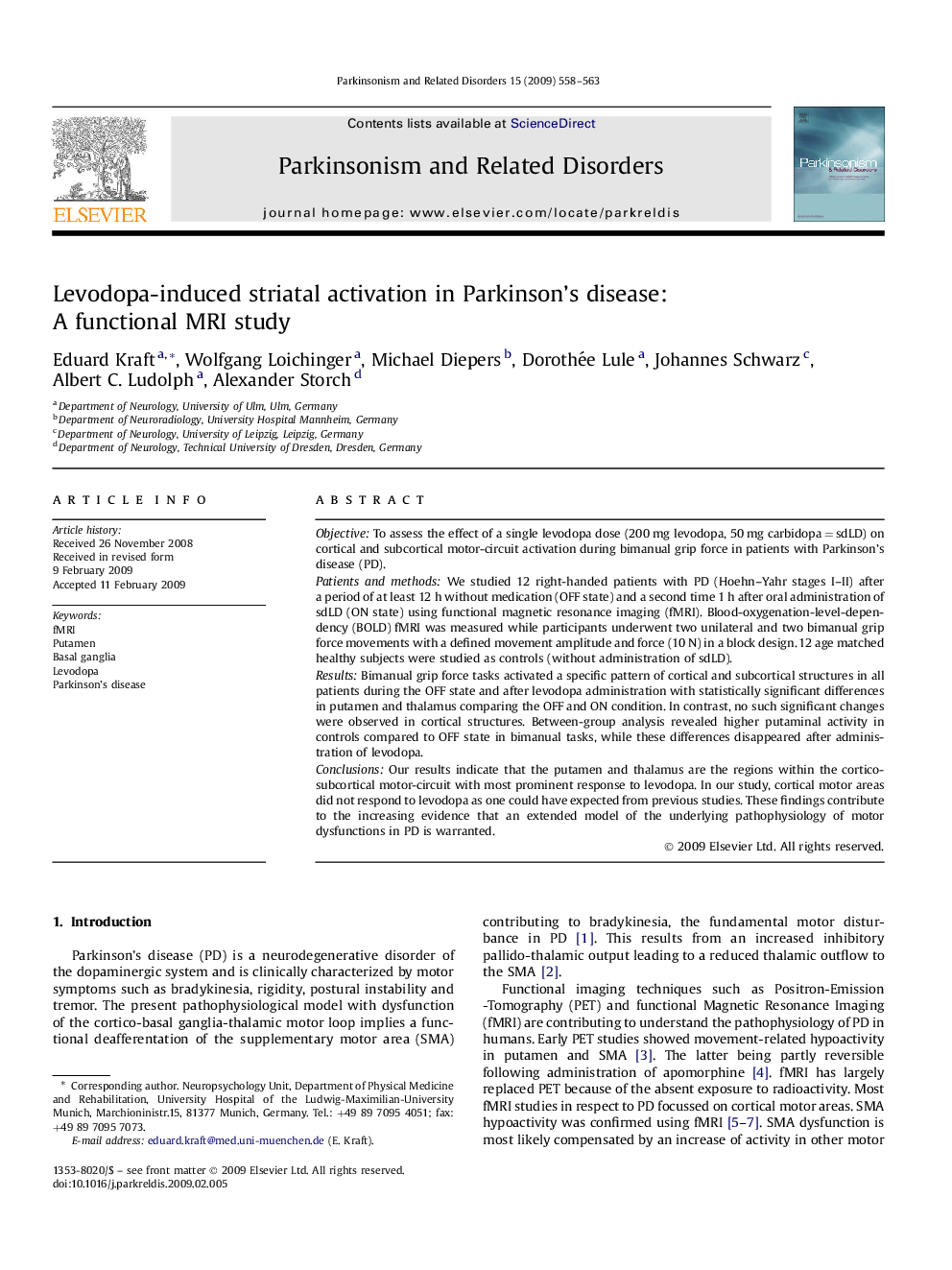| Article ID | Journal | Published Year | Pages | File Type |
|---|---|---|---|---|
| 1921689 | Parkinsonism & Related Disorders | 2009 | 6 Pages |
ObjectiveTo assess the effect of a single levodopa dose (200 mg levodopa, 50 mg carbidopa = sdLD) on cortical and subcortical motor-circuit activation during bimanual grip force in patients with Parkinson's disease (PD).Patients and methodsWe studied 12 right-handed patients with PD (Hoehn–Yahr stages I–II) after a period of at least 12 h without medication (OFF state) and a second time 1 h after oral administration of sdLD (ON state) using functional magnetic resonance imaging (fMRI). Blood-oxygenation-level-dependency (BOLD) fMRI was measured while participants underwent two unilateral and two bimanual grip force movements with a defined movement amplitude and force (10 N) in a block design. 12 age matched healthy subjects were studied as controls (without administration of sdLD).ResultsBimanual grip force tasks activated a specific pattern of cortical and subcortical structures in all patients during the OFF state and after levodopa administration with statistically significant differences in putamen and thalamus comparing the OFF and ON condition. In contrast, no such significant changes were observed in cortical structures. Between-group analysis revealed higher putaminal activity in controls compared to OFF state in bimanual tasks, while these differences disappeared after administration of levodopa.ConclusionsOur results indicate that the putamen and thalamus are the regions within the cortico-subcortical motor-circuit with most prominent response to levodopa. In our study, cortical motor areas did not respond to levodopa as one could have expected from previous studies. These findings contribute to the increasing evidence that an extended model of the underlying pathophysiology of motor dysfunctions in PD is warranted.
